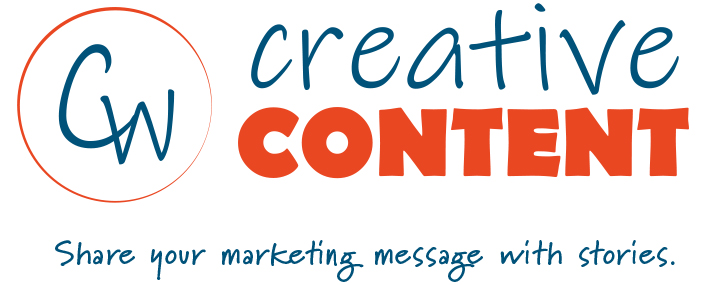Several years ago (14 years, to be exact), I knew I wanted to specialize in writing web content. But I wasn’t convinced it was really necessary to start a newsletter right off the bat.
A marketing coach told me otherwise.
So I got started compiling a list of ideas that would get me through at least a year and half’s worth of monthly issues and began working on my first article.
Another important step in this task was creating an editorial calendar. The topic I chose for my first year of newsletters was “print forms of business communication” – which included letter-writing (the old-fashioned “snail mail” type of letters), postcards, business cards, and flyers. After choosing that year’s theme, all I had to do was come up with 12 topics … each of which could be expanded on in that month’s issue.
The first half of the second year of my newsletter was focused on online business communications – including blogs, social media, information products … and newsletters.
Back then, I referred to online newsletters as “e-zines.” But terms have changed over the past decade. Newsletters, even when distributed online only, are now just called newsletters.
There are lots of reasons for starting a newsletter for your business, but one of the BEST reasons is to stay in touch with your customers and clients. Listed below is a short list of good reasons to start your own newsletter:
- Staying in touch with your clients and/or customers.
- Providing content that can be easily repurposed into posts on your blog or social media platforms.
- Opportunity to announce new programs or products.
- Build credibility with potential clients and/or customers when they visit your site for the first time.
- Establish your authority with other professionals in your industry.
- Makes it easy to “give back” to others by occasionally sharing helpful articles that your audience might not otherwise see.
I’ll Run Out of Ideas!
I can guarantee you there are MORE than enough ideas out there (and different ways of presenting them), regardless of the niche you’re in! For example:
Articles – Provide your customers with in-depth information about your business, or
about topics they’re interested in.
News items – Mention changes and trends happening in your business or industry.
Q&A – Include a question-and-answer section in each issue, with answers to frequently asked questions. Encourage your customers to submit their own questions too!
Product reviews – Write your own reviews of products, or feature ones that others
have done – as long as you trust the source!
Quotes – Most people enjoy good quotes, especially ones that are motivational or
humorous.
Guest articles – Occasionally, you may even want to include articles by others who are
experts in topics your customers are interested in.
Take a look at other company newsletters to get ideas too.
Choose a Format and a Name
Before you even start working on your first article, decide which format you’ll be using: HTML or plain text. One advantage of plain text is that it doesn’t cause newsletters to get caught in spam filters as often as HTML does.
If you decide to go with HTML, there are several companies (such as Constant Contact,
iContact, and AWeber) that provide dozens of templates to help you design your newsletter.
Catchy names are important too, but shouldn’t be misleading. Some of the newsletters I subscribe to have names that aren’t that unusual, but make it pretty clear as to what they’re about. For example, The Copywriter’s Roundtable is an excellent online newsletter I get every week from John Forde – and the title tells you exactly what it is.
How Will You Distribute It?
One of the beautiful things about newsletters is that once you’ve formatted them, inserted the articles, and proofread them, all you have to do is select the names from your database to which you want to send the issue and click “Send” (or whatever the program you’re using says to do). Within seconds, your newsletter is sitting in your customer’s Inbox on their computer!
Companies like Constant Contact and iContact make it easy to do this. Some even have autoresponder features, which allow you to automatically follow up with new subscribers.
VERY IMPORTANT: Online newsletters should always include information on how to unsubscribe.
Start Promoting!
There are MANY ways to promote your newsletter (and the information you share there), but I’m only going to mention a few here:
Submit articles to an article directory. One directory that’s been around for years is EzineArticles.com.
Start a blog. Setting up a blog that focuses on your niche is a great way to build a
following (and attract potential customers), give you credibility, and get feedback … which can lead to more ideas for new content! WordPress (WordPress.org) is the platform I’m most familiar with, but there are others out there too, including Squarespace, Hub Spot CMS, and Medium.
Share your blog posts strategically. Medium is a great place to draw more attention to your blog, especially if you don’t want to syndicate an entire blog post. This article from HubSpot explains how to do that.
In a roundabout way, this can also bring attention to your newsletter … especially if people sign up for your list. (In the near future, I’ll be sharing a few ideas here for “opt-ins” to encourage people to sign up for your newsletter list.)
Video marketing. YouTube is the obvious choice here.
Emails. Set up a signature block for your personal and business emails. That way, every time you send an email, you’re getting free advertising!


